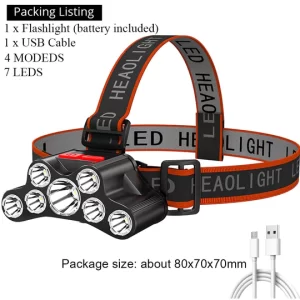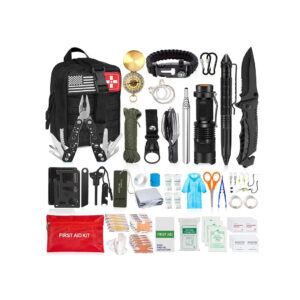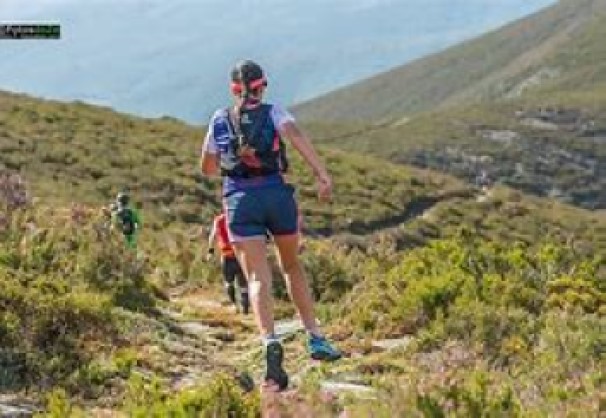Tired of traveling the same old roads? Beyond paved surfaces, trail running opens up a whole new world for you. It is a healthy, straightforward activity with few equipment requirements, similar to road running.
Take the following actions to begin trail running:
- Get the proper footwear
- Prepare to run
- Decide where to trail run
- Practice your trail running technique
Get the Proper Footwear
The crucial piece of equipment for trail runners is their shoes. You can get by with your road running shoes if your first trail run is on a calm gravel road, but as soon as you encounter roots, rocks, and slick mud, you’ll understand the necessity of having trail running shoes.
What distinguishes trail running shoes? Trail running footwear prioritizes traction, foot protection, and stability and is typically heavier than road running footwear. Think of the differences between the tires on a road bike and a mountain bike for an effective analogy. You’ll find a variety of shoes in the trail-running category that are appropriate for everything from easy, groomed trails to highly technical, variable terrain.

Prepare to Run
The appeal of trail running is that it doesn’t require a ton of equipment. Put on some shorts and a T-shirt, lace up your running shoes, and head out the door to go for a quick, short trail run.
There are a few gear considerations that can make your run more comfortable, particularly as you tackle longer distances and tougher terrain.
Bring Water
Except for the shortest runs, water is a necessity. Hydration packs, hydration vests, handheld water bottles, and waist packs with water bottles are your water carrying options.
Clothes
Instead of cotton, which dries slowly, your running clothing should be made of moisture-wicking merino wool or synthetic materials. And socks should be made of merino wool or synthetic materials. A lightweight rain shell or windbreaker is advised for chilly or rainy conditions.
It’s a good idea to layer your clothing, especially for longer runs. You can control your comfort level using this technique. On a long hill climb, you might start out cold but can remove layers as you warm up and put them back on if you get cold during a break or if bad weather comes in.
Think about how breathable your clothing is as well. Avoid wearing clothing that creates an impenetrable barrier because trail running produces a lot of heat and perspiration. The best materials are lightweight knits, and shirts with zippered necks allow you to breathe.
Even though most waterproof rain jackets are breathable, when you’re working hard, they can still become wet and clammy inside. You’ll feel more comfortable wearing quick-drying, breathable synthetic or wool layers or a soft-shell jacket than a waterproof one, unless it’s pouring down rain.
Food
You might only need to bring one or two energy gels for runs under an hour, but if you plan to be out for several hours or more, bring a variety of energy foods, including chews, bars, and gels.
It takes some trial and error to determine which foods are best for your stomach while running. You should stick to straightforward energy foods like gels or chews for shorter, more intense runs. If you run farther distances, like ultramarathons, you might discover that heartier foods like bars, nuts, peanut butter and jelly sandwiches, and other “real” foods sit OK because you’re usually moving at a slower pace.
Watch
There are a variety of watches available, from inexpensive sport watches that tell the time and have a stopwatch to high-end GPS watches that track speed and distance and can be used for navigation. Other options include activity trackers that keep track of your steps. Some of these gadgets come equipped with heart rate monitors, which can help you work out more efficiently.
Navigational Aids
Remember to bring navigational aids, such as a map, compass, and/or a GPS device, if you’re running trails in an unfamiliar area.

Lights
Are you a night runner? A headlamp is essential. Your backpacking headlamp might be adequate, but if you intend to run at night a lot, you’ll need a light with a minimum output of about 200 lumens. Besides a headlamp, some trail runners prefer to carry a handheld flashlight to brighten the night and allow them to look around while always keeping the flashlight pointed at the trail.
A headlamp whose beam shape can be changed is a good option. When you need to see farther down the trail, you can switch to the spot setting from the wide flood setting, which provides good peripheral illumination.
Sun Protection
Sunscreen (SPF 30 or higher is recommended), lip balm, a hat, and sun-protective clothing can all be used for sun protection. Remember that fair-skinned people can develop skin damage from just 15 minutes in the midday sun.
You can probably use less sun protection or even none if you spend all of your time running under the shade of trees. However, be sure you’re ready if the trail leads to an exposed ridgeline or the summit of a mountain.

Medical Kit or First-Aid Kit
The length and starting point of your trail run have a big impact on how big your first-aid kit should be. Many people carry nothing at all on runs of an hour or less that aren’t too far from civilization. However, if you’re embarking on an adventure that will last several hours or longer or a tough trail, a basic first-aid kit can be extremely helpful if you fall. The essentials, including bandages, antibacterial ointment, and painkillers, are advised to treat minor wounds.
Consider bringing an emergency shelter, an emergency splint, an elastic wrap, water treatment tablets, and medical supplies for more serious injuries when going on a trail run in a remote area. Don’t forget to include specialized items in your kit for treating foot issues, such as blister bandages, athletic tape and moleskin.
Decide Where to Trail Run
When organizing your first excursion, it’s crucial to keep in mind that trail running typically requires more time than road running for a comparable distance. Start slowly and avoid committing to a distance that you’re unprepared for because the rougher terrain and undulating trails will slow your pace and engage muscles you might not be used to using.
Local roads and trails: The local network of dirt trails and gravel roads that many towns and cities have is a fantastic place to start trail running. Find local state or city parks, or venture out on a quiet gravel road. These leisurely excursions are excellent for acclimating to the terrain and testing out new equipment.
Guidebooks and websites: These resources are especially useful when you’re ready for a greater challenge or want to look beyond your local trails. They provide you with all the information you’re likely to need, including information about the trail’s features, distance, elevation gain, difficulty, and whether dogs are permitted. On websites, you might also find recent trip reports that can help you get a feel for what the trip will actually be like when you run it. Don’t restrict yourself to resources only for trail running. Many websites and guidebooks for hiking or backpacking provide details that can be helpful when organizing a trail run.
Running Club: Joining a local trail-running club is yet another way to find new trails. These are a common sight in a lot of communities and many would be more than happy to share trails and tips.

Practice Your Trail Running Technique
You face different difficulties on trails than on paved surfaces because of the uneven terrain. Rocks, logs, and roots are common roadblocks. You can navigate this type of terrain by improving your trail running technique.
Simple Trail Running Methods
Stride quickly, especially when compared to running on the road. To keep your balance on uneven terrain, keep your feet firmly planted at all times. Don’t go too far.
Maintain a downward gaze while searching the trail 10 to 15 feet in front of you for obstructions. Don’t fixate on your feet, please.
Make your arms swing. You can maintain your balance and relax your core by doing this.
Many challenges lie ahead. Pick the path that will leave you feeling the most secure, like a goat.
Hills
Shorten your step even more when the terrain begins to slope. Continually take small, frequent steps to keep your cadence.
Maintain a straight back. Avoid the urge to lean forward when climbing hills, because doing so can make it harder for you to breathe deeply. Avoid leaning back while going downhill, as this can put strain on your body and cause injury.
Too steep? It’s allowed to walk. Bonus: By staying off the steep trails, you reduce erosion.


